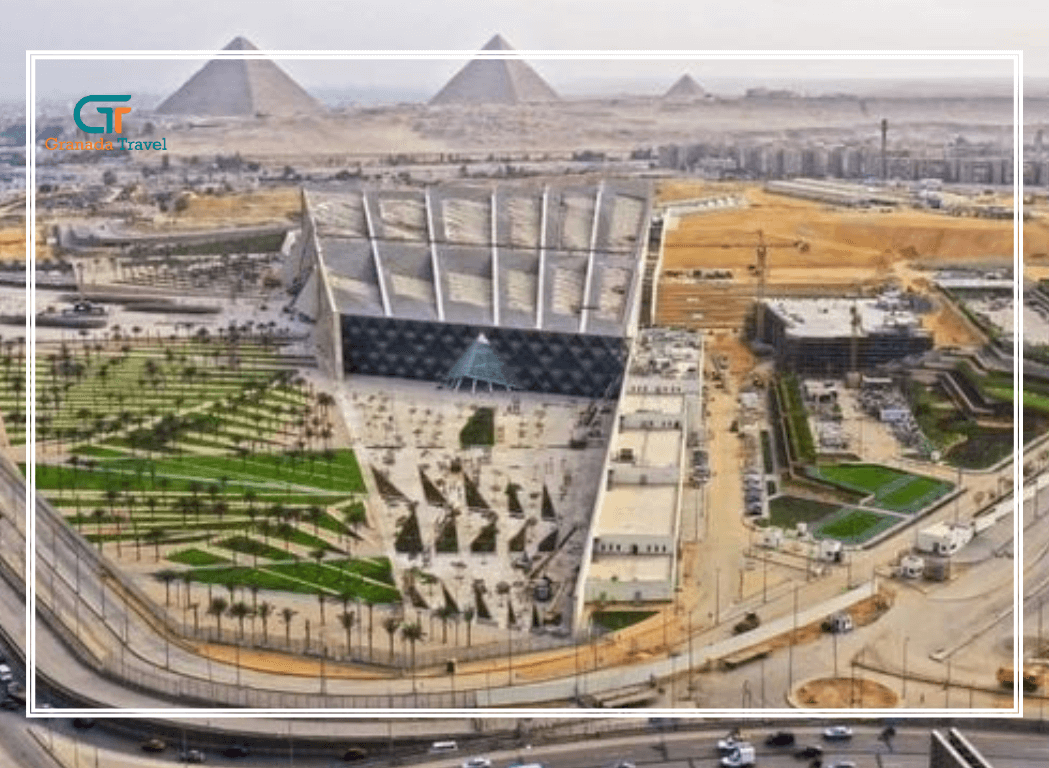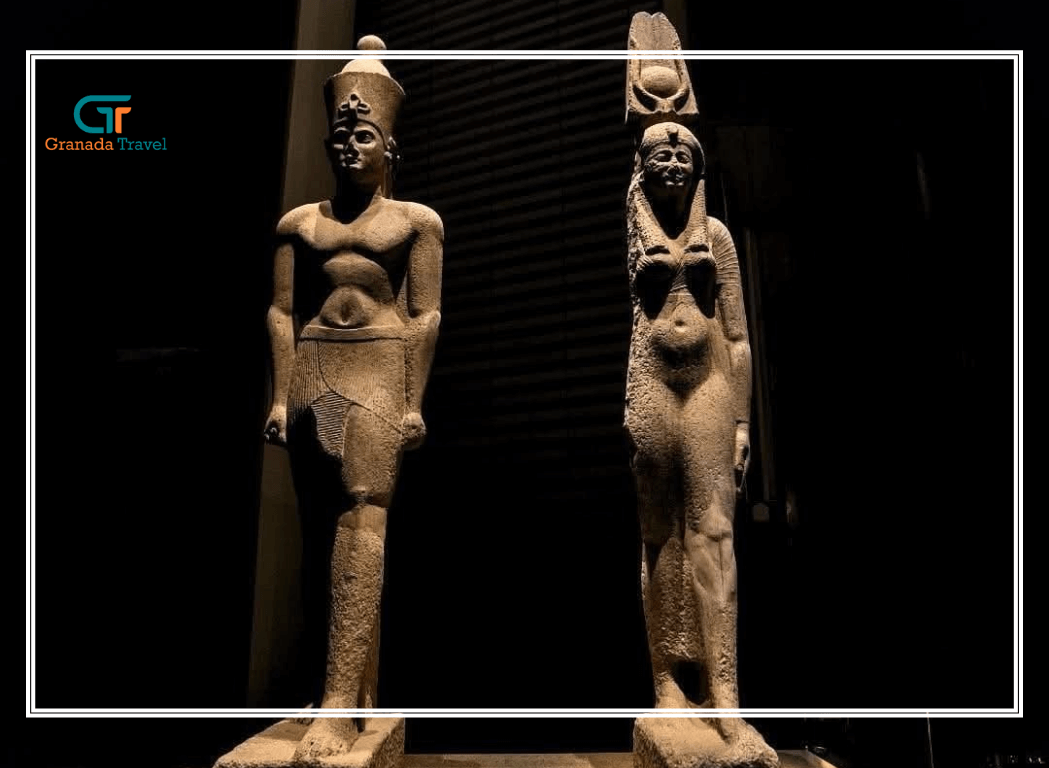
Unveiling the Majesty of Luxor Temple: A Journey Through Time
Standing proudly on the east bank of the Nile, the magnificent Luxor Temple whispers tales of pharaohs, gods, and the ebb and flow of millennia. This breathtaking monument, with its towering columns and intricate carvings, serves as a powerful testament to the ingenuity and artistry of ancient Egypt. For anyone venturing to Luxor Egypt, a visit to Luxor Temple is an absolute must, offering a profound connection to a civilization that continues to captivate the world.
Let's delve deeper into the wonders of this iconic site, exploring its rich history of Luxor Temple, its impressive architecture, and what makes it such a compelling destination today.
The Genesis of Grandeur: Luxor Temple Construction
The story of Luxor Temple construction began during the New Kingdom, around 1400 BCE. It was primarily the vision of Amenhotep III (circa 1390-1352 BCE) who initiated the main structure. He dedicated the temple largely to the Theban Triad: Amun, Mut, and Khonsu. Later, significant additions were made by other notable pharaohs, most notably Ramesses II (circa 1279-1213 BCE), who added the impressive pylon and the open courtyard.
The purpose of the temple of Luxor Egypt differed somewhat from the vast Karnak Temple complex located a few kilometers to the north. While Karnak was primarily a cult temple dedicated to the worship of Amun, Luxor Temple appears to have had a more specific focus, possibly related to the royal ka, or spirit. During the annual Opet Festival, the sacred barques of the Theban Triad would travel in procession from Karnak to Luxor Temple, highlighting the close relationship between the two sites, a connection further emphasized by the Avenue of Sphinxes that once linked them.
[cta-actions]
A Visual Feast: Luxor Temple Images
Words can only do so much to convey the sheer scale and beauty of Luxor Temple. Thankfully, luxor temple images abound, offering glimpses into its grandeur. From sweeping panoramic shots showcasing the entire complex against the backdrop of the modern city, to close-ups revealing the intricate hieroglyphs adorning its walls and columns, these visuals provide a tantalizing preview of what awaits visitors.
Imagine standing before the colossal statues of Ramesses II at the entrance, their weathered faces still exuding power. Picture the towering columns of the colonnade, their papyrus-headed capitals reaching towards the sky. Envision the delicate carvings depicting religious rituals and royal victories. Luxor temple images capture these details, allowing us to appreciate the artistry and dedication that went into creating this ancient marvel.
Stepping Inside: Luxor Temple Inside
To truly experience the magic of Luxor Temple, one must venture to the luxor temple inside. Walking through its various chambers and courtyards is like stepping back in time. You'll traverse the grand colonnade built by Amenhotep III, its smooth, soaring columns still awe-inspiring. The Court of Ramesses II, with its well-preserved statues and reliefs, offers a glimpse into the pharaoh's power and piety.
Further inside, you'll find the hypostyle hall, once adorned with vibrant paintings (traces of which can still be seen), leading to the inner sanctuary. Although some areas have been altered or repurposed over the centuries (including a Roman shrine within the temple precinct), the fundamental structure and the enduring spirit of the ancient Egyptians remain a palpable Luxor temple inside.
Echoes of the Past: History of Luxor Temple
The history of Luxor Temple is a long and fascinating one. As mentioned earlier, its main luxor temple construction phase occurred during the New Kingdom. However, its significance continued through later periods. Alexander the Great even built a sanctuary within the temple dedicated to himself.
During the Roman era, the temple served various purposes, including being partially converted into a legionary camp. Later, a mosque dedicated to Abu al-Haggag was built within the temple complex, a testament to the site's continued importance across different eras. Understanding the history of Luxor Temple allows us to appreciate its layered past and the various influences that have shaped its present form.
Timeless Existence: Luxor Temple Age
So, how old is Luxor Temple? Given that its primary construction began around 1400 BCE, luxor temple age is approximately 3400 years old. This staggering number underscores the enduring nature of this monument and the incredible longevity of ancient Egyptian civilization. Standing within its walls, you are in the presence of history stretching back millennia.
A Tale of Two Temples: Luxor Karnak Temple Facts
While distinct entities, Luxor Karnak Temple facts often highlight their historical and ritualistic connection. As mentioned, the annual Opet Festival saw the divine barques travel between these two significant sites. Karnak, much larger and more complex, was the principal religious center, while Luxor Temple held its own unique importance, possibly related to the rejuvenation of the royal ka. The Avenue of Sphinxes, now being extensively restored, once physically linked these two powerful religious hubs, emphasizing their interconnectedness.
Ancient Roots: Luxor Temple Ancient Egypt
Luxor Temple ancient Egypt embodies the artistic, religious, and architectural prowess of this remarkable civilization. Its design, its decorations, and its very existence speak volumes about the beliefs and practices of the ancient Egyptians. The intricate hieroglyphs tell stories of gods and pharaohs, while the imposing architecture reflects their power and their connection to the divine. Exploring Luxor Temple ancient Egypt offers a profound insight into a world that continues to fascinate us.
A Different Perspective: Luxor Temple at Night
Experiencing Luxor Temple at night offers a completely different perspective. Illuminated by carefully placed lights, the temple takes on an ethereal beauty. The shadows and highlights accentuate the carvings and the grandeur of the architecture, creating a truly magical atmosphere. Walking through the colonnade under the soft glow of the lights is an unforgettable experience, allowing for a more contemplative appreciation of this ancient site. Many visitors find Luxor Temple at night particularly captivating.
Historical Significance: Luxor Temple Egypt History
The history of Luxor Temple Egypt is inextricably linked to the broader narrative of ancient Egyptian civilization. From its New Kingdom origins through its later uses, the temple has witnessed the rise and fall of empires and the shifting tides of time. Studying Luxor Temple Egypt history provides valuable context for understanding the religious, political, and cultural landscape of ancient Egypt.
An Immersive Experience: Luxor Temple Light Show
For a truly immersive experience, consider attending the Luxor Temple light show. This audio-visual spectacle brings the temple's history to life, projecting colorful images onto its walls and narrating its story. While opinions in luxor temple reviews on the light show can vary, many find it a captivating way to engage with the temple's past, particularly for those who appreciate a more dynamic presentation.
Finding the Past: Luxor Temple Location
The luxor temple location is conveniently situated in the heart of modern Luxor, on the east bank of the Nile River. Its central location makes it easily accessible to visitors staying in the city.
What Others Say: Luxor Temple Reviews
Reading luxor temple reviews can offer valuable insights from fellow travelers. Many praise the temple's impressive scale, its well-preserved features, and the sense of awe it inspires. Some reviews highlight the beauty of visiting at sunset or at night. While individual experiences may differ, the general consensus is that Luxor Temple is a truly remarkable and unmissable site.
Exploring Beyond: Luxor Egypt and its Treasures
While Luxor Temple is a highlight, Luxor Egypt offers a wealth of other historical treasures. A visit to the vast Karnak Temple complex is essential, as is exploring the West Bank with its royal tombs in the Valley of the Kings and the impressive Habu Temple. Don't forget the poignant Colossi of Memnon, guarding the Theban Necropolis. For those interested in artifacts, the luxor museum provides a fascinating collection. Further afield, you might consider a trip to the well-preserved abydos temple or the charming esna temple.
In conclusion, Luxor Temple stands as a magnificent testament to the enduring legacy of ancient Egypt. Its impressive architecture, rich history, and captivating atmosphere make it a truly unforgettable destination. Whether you are captivated by the history of Luxor Temple, drawn to the beauty of luxor temple images, or eager to explore luxor temple inside, a visit to this iconic site is sure to leave you in awe of the wonders of the past. Make sure to include Luxor Temple on your itinerary when you visit Luxor Egypt!
[cta-actions]





